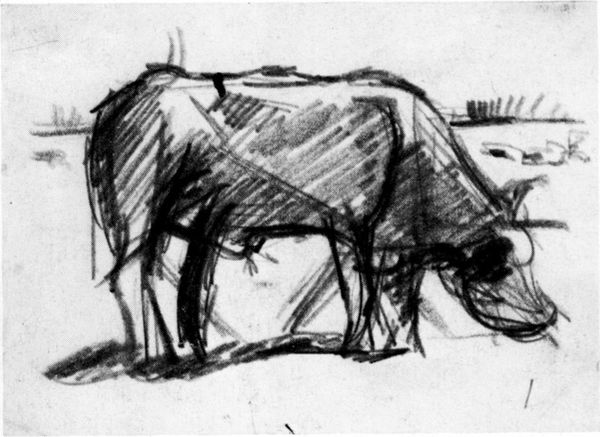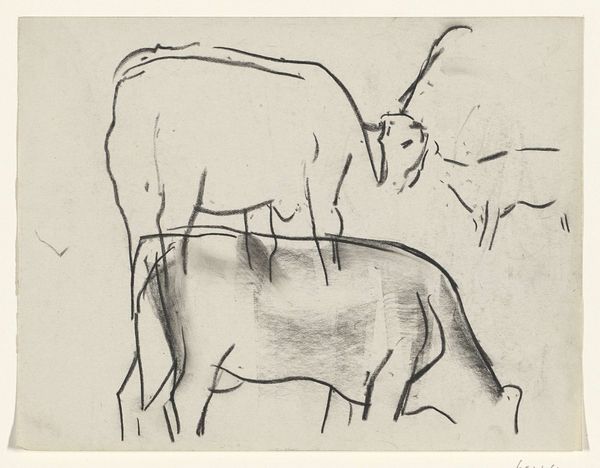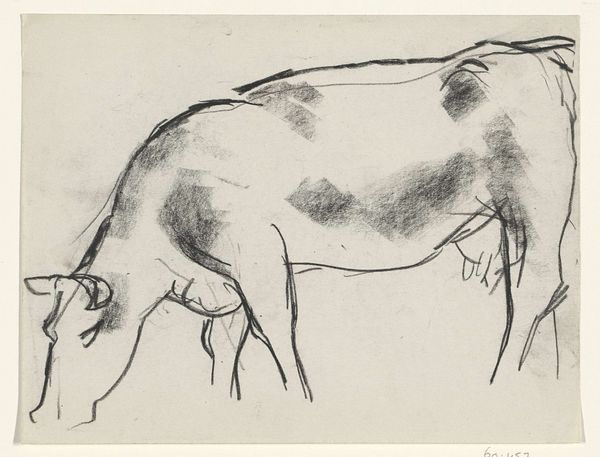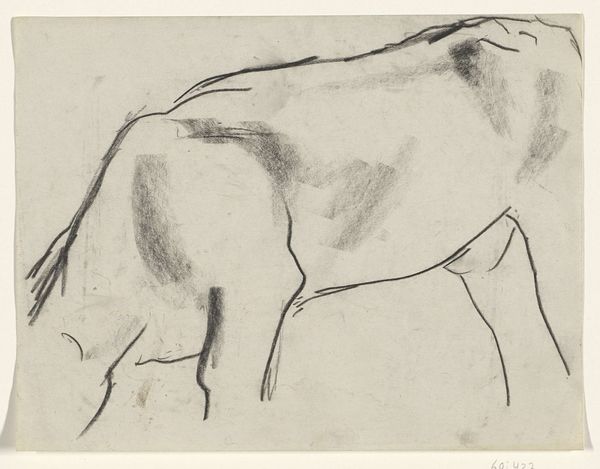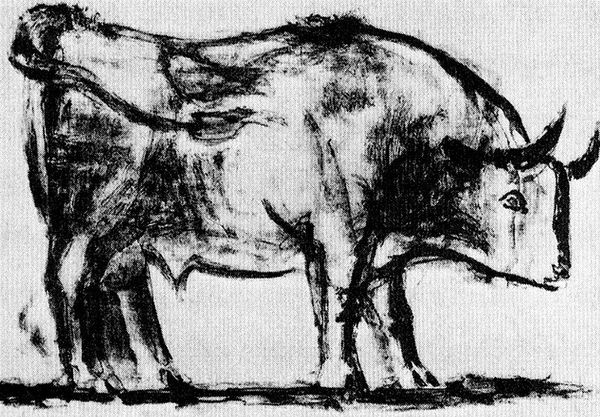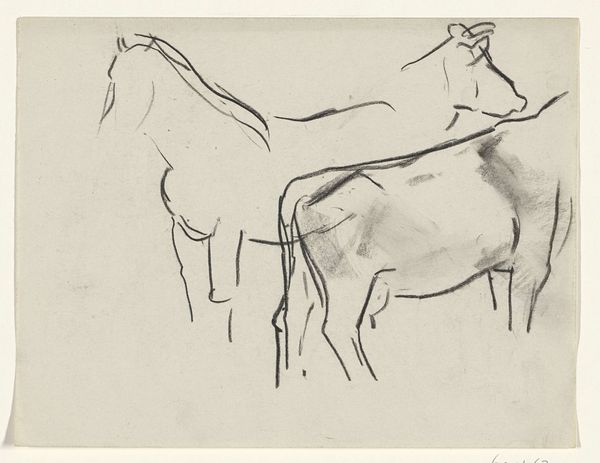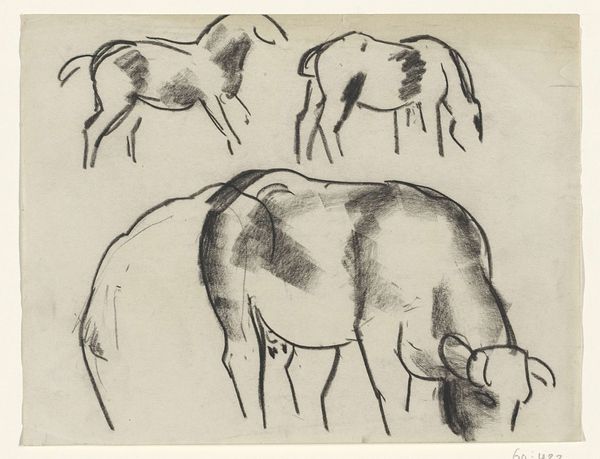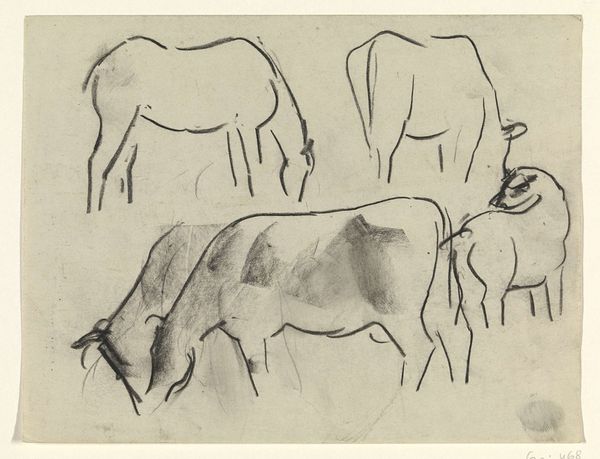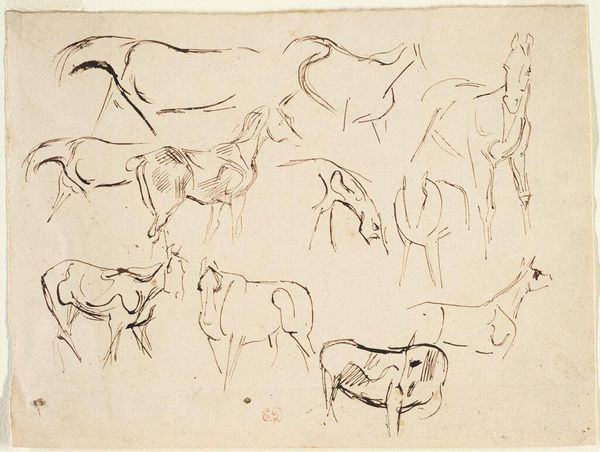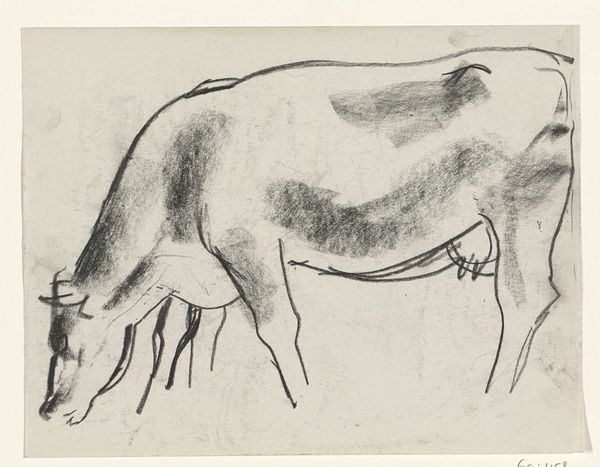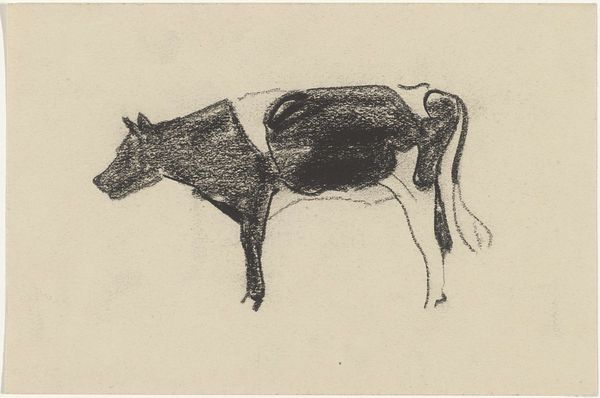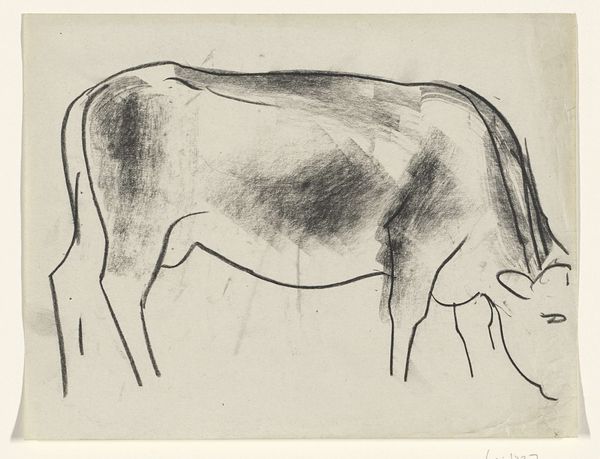
drawing, graphite
#
portrait
#
drawing
#
de-stijl
#
cubism
#
animal
#
abstraction
#
line
#
graphite
Dimensions: 11.7 x 15.9 cm
Copyright: Public domain
Editor: This graphite drawing is titled "Composition (The Cow)," and it was created in 1917 by Theo van Doesburg. It feels almost like an unfinished sketch, with the lines implying form rather than defining it. How do you see this piece? Curator: Well, initially, it's important to understand this work in the context of De Stijl and its relationship to industrial production. Van Doesburg's abstraction wasn't just about aesthetics; it was about a new way of seeing and creating things, connected to the rise of the machine. How does the flatness of the drawing and the choice of a common animal, the cow, complicate traditional ideas about art's value and its relationship to labor? Editor: I see what you mean. It challenges the idea of the artist as someone creating unique, precious objects. By using simple materials like graphite and focusing on basic geometric forms, it feels like he's trying to democratize art, almost making it replicable, like a blueprint. Curator: Exactly. Consider the historical moment too. World War I had a devastating impact on European society. De Stijl artists sought a universal visual language to promote social and political reform through art and design. Where do you think the drawing medium comes into play? Editor: Graphite is so accessible, so readily available and mass produced. It’s far from precious. It feels very intentional, and I am really beginning to see that even the act of drawing is loaded with meaning about the creation of goods, as much as, or maybe even more than, about depicting an animal. Curator: Yes, the very materials point to a conscious engagement with industrial modes of production and their societal impact. Editor: That is so much more insightful than what I was originally seeing. Curator: That’s the value of considering materiality and context!
Comments
No comments
Be the first to comment and join the conversation on the ultimate creative platform.
